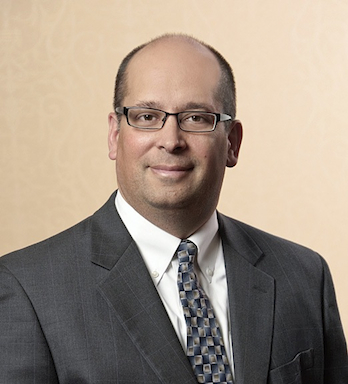5 'crazy ones' reshaping health IT
We spotlight five innovators who are daring to do things a little different

The Ad Man
By Mike Miliard, Managing Editor
 Before coming to health IT in 2006, Jeff Donnell spent more than 20 years in advertising and marketing, which has given him a unique perspective on this industry.
Before coming to health IT in 2006, Jeff Donnell spent more than 20 years in advertising and marketing, which has given him a unique perspective on this industry.
Specifically, the ad world has offered him an interesting angle from which to approach his company's mission of driving personal health record adoption. After all, isn't encouraging patient engagement basically a form of public relations?
At Fort Wayne, Ind.-based NoMoreClipboard, Donnell is in charge of strategy, business development and marketing. Yes, he's got a product to sell. And to judge from the gains made by the NoMoreClipboard PHR in recent years – expanding market share while earning high marks for usability and interoperability – he's doing a decent job of it.
But he's also selling a concept, patient engagement, which, for all its much-ballyhooed discussion lately, is still in its infancy. That's another area where his years on the creative side of ad teams have helped shape his vision.
"I did a fair amount of work with clients where you not only had to promote an organization and its products, but quite often had to help build the category," says Donnell. "We had a lot of clients on our roster where it would be a brand new market segment and you had to help build the market for the product at the same time you were helping build the client's brand. "
After jumping to NMC from the ad world, the first strategy was to market PHRs "direct to consumer," he says. "But we soon realized that we were way too early to a party that hadn't started yet."
Patient engagement wasn't quite yet on the radar screen for most folks. "That's where my category building experience would pay off," says Donnell.
He knew it would be a "long, uphill battle, and require a lot of pick-and-shovel, missionary-type work." He also strategized that a rising tide lifts all boats.
"That's why early on, when Google Health and Microsoft HealthVault and others came on the scene, our approach was not to view those and others as competitors but to say, look, we're all in this together," says Donnell. "Let's make it easy for patients to move data back and forth."
Patient engagement is a concept that most folks agree is inherently worthwhile, and beneficial to health. So, in a way, there's something of a moral component to the cause as well. Interestingly, that's a force that seems to motivate Donnell – who once won a national ADDY award for a pro bono local campaign against riverboat gambling in Indiana.

Even with a fraction of the budget of the moneyed opposition, the campaign – serious, but with a slightly naughty sense of humor – changed enough minds that his "was the only community in Indiana that voted down riverboat gambling in their county."
In a way, that righteousness fuels another of Donnell's well-known projects, the long-running satire project Extormity.com – a fictitious EHR company ("at the confluence of extortion and conformity") that embodies the worst impulses of vendors: proprietary, price-gouging, pompously dismissive of workflow and interoperability.
Donnell launched the project both to call out some of the industry's worst excesses – while also getting some viral marketing on the cheap, slyly positioning NMC and its parent company Medical Informatics Engineering as the antithesis of Extormity.
"When I got involved in health IT, I was thinking it would be a noble calling, and that the entire vendor community would embrace ideas like interoperability," he says. "I was surprised when that was not the case.
"When we would go out and talk to potential clients, we had to first hear all about how horrible health IT vendors are," says Donnell. "They're expensive and their software is inflexible and they tell us we need to change how we practice medicine. Those concerns, those emotions, were so deep-seated and visceral, that it wasn't easy to overcome."
On the flipside, the industry response to the wickedly funny Extormity "has been unbelievably positive," he says. The hope is that by continuing that "left brain/right brain" approach, patients will be just as receptive to his efforts on engagement.
Next page: The Advocate























